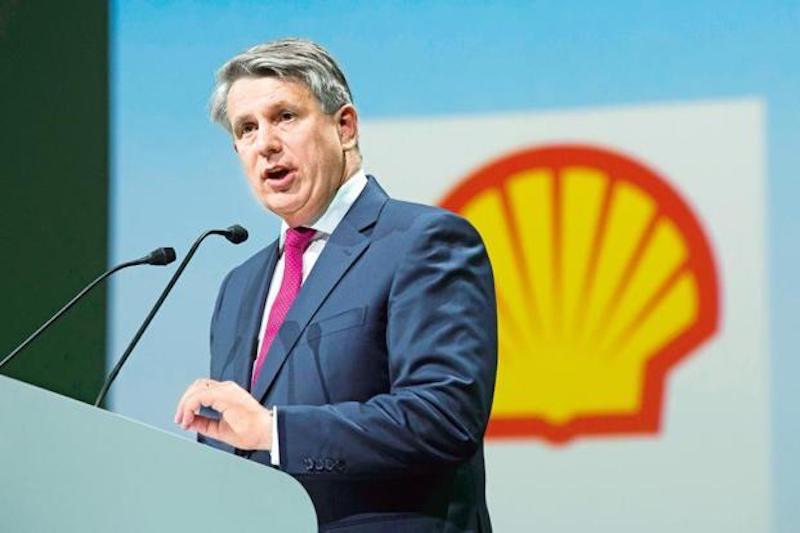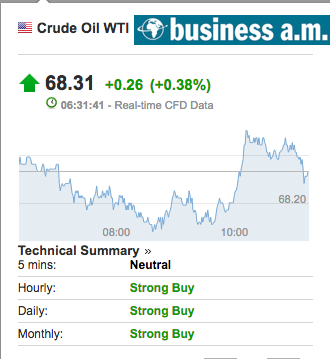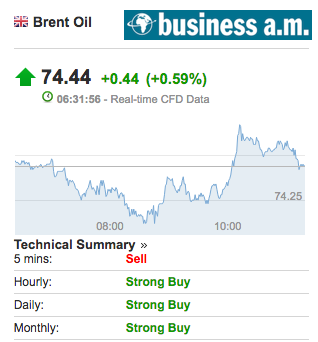Revelations of the improperly handled data of 87 million users did nothing to stop Facebook Inc.‘s money machine.
The data-privacy scandal involving Cambridge Analytica broke in mid-March, but the company appeared to shrug off those concerns with huge earnings and revenue beat in the first quarter. In a Wednesday report, Facebook FB posted $4.99 billion in quarterly profits on sales of $11.97 billion, topping analysts’ average estimates of $4.01 billion for net income and $11.41 billion in revenue.
“Despite facing important challenges, our community and business are off to a strong start in 2018,” Chief Executive Mark Zuckerberg said on a conference call Wednesday afternoon. “Over the next three years we’re going to keep building Facebook to not only be a service that people love to use, but also one that’s good for people and good for society.”
Facebook stock gained more than 4% in after-hours trading after the earnings report was released, and was up 7% following its conference call. Before Wednesday’s earnings, Facebook shares had fallen roughly 18% from its February record high, after closing flat at $159. The stock has lost 9.5% this year, as the benchmark S&P 500 index SPX+0.18% has fallen 1.5%.
Insights Daniel, Head of technology research at GBH, Ives wrote in a note to clients late Wednesday that the company’s results were “solid” and heralded the company’s profit and revenue as a “key initial victory” for the stock as investors gauge damage from the Cambridge Analytica fallout.
Facebook added 70 million users in the first quarter, meeting user-growth expectations despite public calls to delete the social-media app. The company now boasts 1.45 billion daily users and 2.2 billion monthly members. The company’s operating expenses came in below consensus expectations, though Zuckerberg has warned they will continue to eat into Facebook’s profits as it adds 20,000 workers to address security and privacy concerns.
According to the earnings release, Facebook increased its workforce by 48% to 27,742, compared with the year-earlier quarter.
David Wehner, Chief Financial Officer broke down a portion of those security and safety costs, telling analysts that the sales and marketing expense growth of 51% compared with the year-earlier quarter was driven by the “community operations investment.” That unit includes some of the money the company is spending on quality and safety initiatives, and Wehner expects the spending to “carry through the year.”
Previously, executives said the costs related to safety and security would be spread across a number of operating-expense line items, including research and development and general administration, but had not given more detail.
Impressions, a key data point in terms of gauging advertiser interest during the quarter, grew by 8% and the price of ads grew by 39%. In the year-earlier period, Facebook grew impressions by 32% and ad prices by 14%. Because Facebook’s ads are in demand, when the social network constricts the supply ad prices typically rise — and should that happen and prices remain constant or fall, it would likely signal a weaker demand from advertisers.
The company’s healthy ad business drew the vast majority of sales, but investors often look to the company’s nascent Messenger and WhatsApp divisions as potentially massive sources of revenue in the future. Zuckerberg said that the company didn’t view those services as means of charging for payments, but that messaging apps “can be a more transactional medium than feed.”
In terms of how that might look in the future, Zuckerberg said, “You can click through or tap through to a message thread, and then you can either get customer support or complete a transaction or do a follow-on transaction. And that will be very valuable for businesses.”
Much of lawmakers’ and the public’s attention has been focused on the Cambridge Analytica scandal that broke on March 17. Zuckerberg said as recently as early April that it has had no material effect on the company’s financial operations — yet.
But the changes the company announced early this year have had much more time to play out. In January, Zuckerberg said the company would give posts and other content from members’ friends and family a higher priority than material produced by third-parties such as news organizations, marketing companies and other for- and nonprofit corporate pages.
On the call Wednesday, at least two analysts asked Facebook executives whether the time spent on the platform had changed because of the changes to the news feed. Executives did not directly answer the question.
In January, Zuckerberg issued a warning to investors: Facebook executives expected “some measures of engagement” to drop and that its 2-billion-and-counting user base would likely spend less time on the platform.
Should antitrust laws be enforced against the tech giants’ monopolies? (2:49)
A handful of tech companies – Microsoft, Google, Amazon, Facebook and Apple – dominate their respective markets, with a growing number of critics arguing they should be broken up or regulated as monopolies. Here’s what you need to know.
When asked about the business impact of the changes at the February Morgan Stanley tech conference in San Francisco, Facebook Chief Financial Officer David Wehner told analysts that spending less time on the platform doesn’t necessarily mean a corresponding decline in revenue.
“The impact of the business is much more muted because we’re still seeing that there’s lots of post engagement,” he said. “So when you’re taking away time from things like passive video, it doesn’t mean you’re not seeing as many posts in news feed…I don’t think the impact on the business is really that profound relative to the impact on time.”
In contrast, Europe’s General Data Protection Regulations, set to take effect May 25, will have an impact on Facebook’s operations. The company expects European monthly and daily active user counts to be flat or down in the second quarter as GDPR takes effect, but isn’t sure about the long-term implications.
Chief Operating Officer Sheryl Sandberg told analysts that the entire online advertising industry has to deal with the changes and what the company is concerned with is trends over time.
“We’re going to all know a lot more after we roll out, but the thing that won’t change is that advertisers are going to look at the highest [return on investment] opportunity,” Sandberg said. “And what’s most important in winning budgets is relative performance in the industry.“





